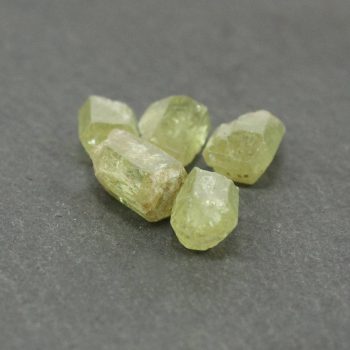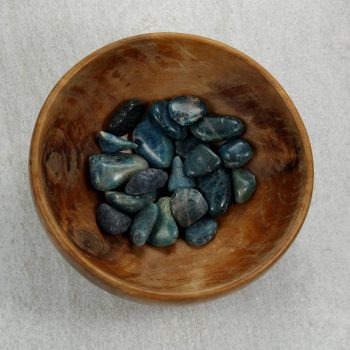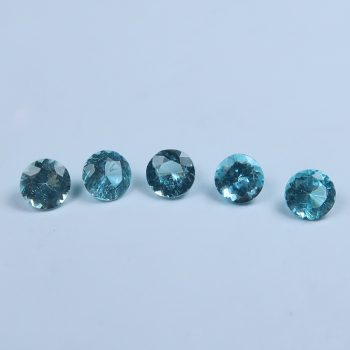Apatite
Apatite is a group of Phosphate minerals, including hydroxyapatite, fluorapatite and chlorapatite.
It can occur in a range of colours including clear, green, blue, and a few others – although green and blue are the most common.
High grade pieces of Apatite are faceted or cut into cabochons for jewellery making. The bright colours of Apatite can make amazing specimens for collectors.
Showing all 3 results
-

Apatite Specimens (Green)
£1.00 – £3.50 -

Apatite Tumblestones (Blue)
£1.25 – £3.00 -

Apatite, faceted (Blue)
£4.00
Appearance, Uses and History
Apatite is primarily used in industry as a phosphate in fertilisers. For our purposes, the main uses are as specimens and as gemstones – faceted, cabochons and beads.
Some Apatite can contain rare earth metals, and can contain uranium – however, it can be safer than most other ores like monazite which are more radioactive.
Apatite has given us some amazing information about the moon – analysis of the moon rocks from the Apollo mission has helped to give scientists a much more detailed idea of the possible amount of water on the moon, stored as hydroxyl within the minerals themselves.
Locales
Large deposits of Apatite can be found in Brazil, Canada, Germany, India, Madagascar, Mexico, Morocco, Norway, South Africa, Spain, and the USA. Most of the gem quality material comes from Brazil and Mexico.
Mineralogy
Hazards and Warnings
Almost all rocks, minerals (and, frankly, almost all other substances on earth) can produce toxic dust when cutting, which can cause serious respiratory conditions including silicosis.
When cutting or polishing rocks, minerals, shells, etc, all work should be done wet to minimise the dust, and a suitable respirator or extraction system should be used.
Translations
Arabic:
- اباتيت
- الأباتيت
Hindi:
Portuguese:
- apatita
Bengali:
Indonesian:
- apatit
Punjabi:
English:
- apatite
Italian:
Russian:
- апатит
French:
Japanese:
- アパタイト
Spanish:
- apatito
- apatita
German:
- apatit
Korean:
- 인회석
Thai:
- อะพาไทต์
Gujurati:
Mandarin and Traditional Chinese:
- 磷灰石
Urdu:
Further Reading / External Links
- https://www.mindat.org/min-29229.html
- https://en.wikipedia.org/wiki/Apatite
